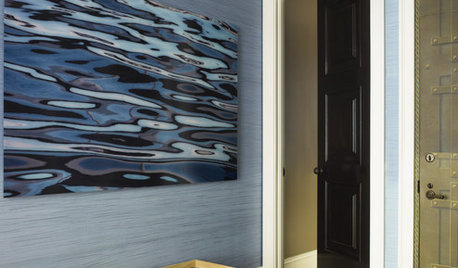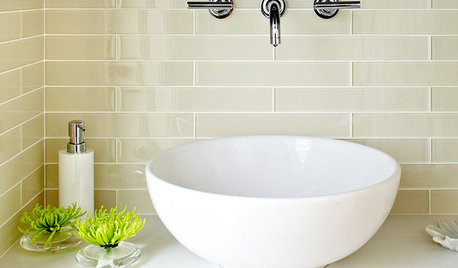Finishing Techniques
sandymac1
15 years ago
Related Stories

SELLING YOUR HOUSEHome Staging to Sell: The Latest Techniques That Really Work
Get up to speed on the best ways to appeal to potential buyers through accessories, furniture, colors and more
Full Story
DECORATING GUIDESStripe It Rich With a Strié Finish
Let the striations of this traditional technique bring luxurious depth and richness to your walls, finishes and upholstery fabrics
Full Story
WALL TREATMENTSPick the Right Paint Finish to Fit Your Style
The question of finish may be as crucial as color. See which of these 9 varieties suits your space — and budget
Full Story
REMODELING GUIDESFinishing Touches: Pro Tricks for Installing Fixtures in Your Tile
Cracked tile, broken drill bits and sloppy-looking fixture installations? Not when you follow these pro tips
Full Story
REMODELING GUIDESPro Finishing Secret: Aniline Dye for Wood
Deeper and richer than any stain, aniline dye gives wood stunningly deep color and a long-lasting finish
Full Story
WOODDesign Workshop: Plywood as Finish
Trendproof your interior with this sensible guide to using this utilitarian material indoors
Full Story
FLOORS11 Distinctive Finishes for Original Floorboards
Whether you go for glossy, painted or matte boards, make your wood floor the star
Full Story
KITCHEN DESIGNTwo-Tone Cabinet Finishes Double Kitchen Style
Love 'em or not, two-tone kitchen cabinet treatments are still going strong. Try these strategies to change up the look of your space
Full Story
MATERIALSShow Off the Bones of Your Home With Exposed Finishes
There can be beauty in raw materials. Display them with care, and the effect is surprisingly warm and welcoming
Full Story
DECORATING GUIDESFinish Your Floors to Perfection With Parquet
Add value and gorgeous detail to your home with timeless and elegant parquet flooring in a classic design
Full Story








sombreuil_mongrel
aidan_m
Related Professionals
Country Club Cabinets & Cabinetry · Ridgefield Cabinets & Cabinetry · South Riding Cabinets & Cabinetry · Mountain Home Carpenters · Needham Carpenters · Saint Charles Carpenters · Camp Verde Flooring Contractors · Conyers Flooring Contractors · La Mesa Flooring Contractors · Maryville Flooring Contractors · Miami Flooring Contractors · Mukilteo Flooring Contractors · Englewood Flooring Contractors · St. Louis Furniture & Accessories · Silver Spring Furniture & Accessoriesbobismyuncle